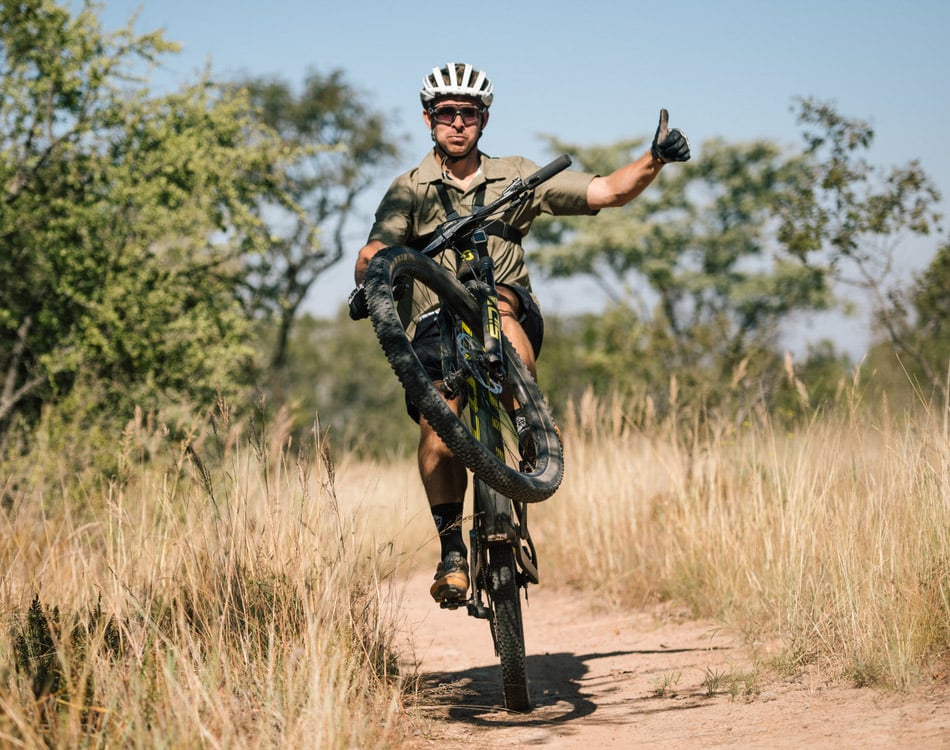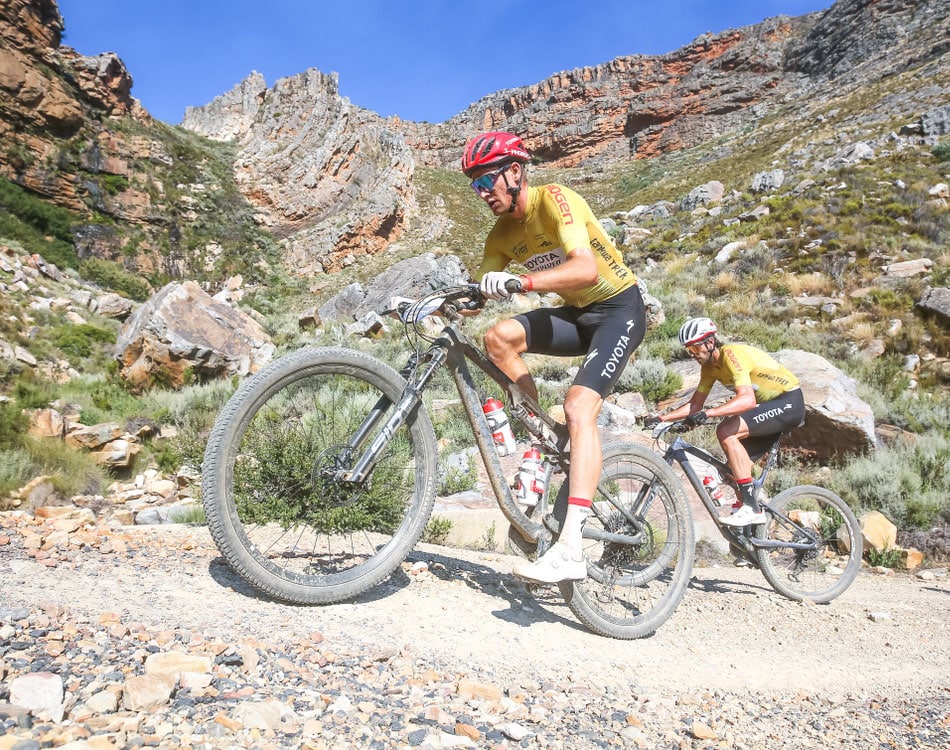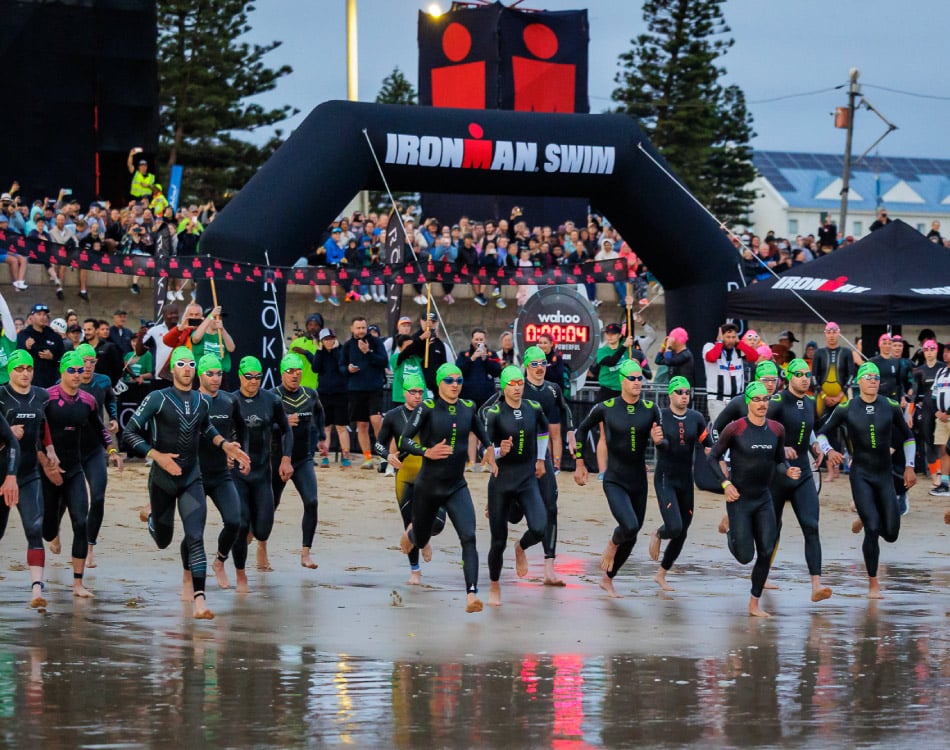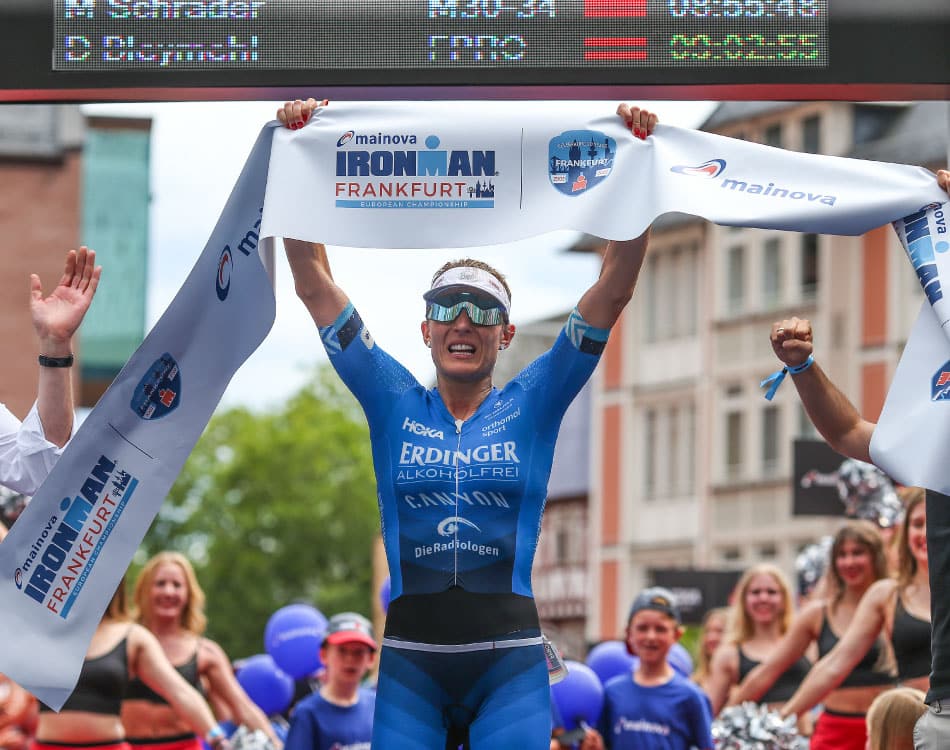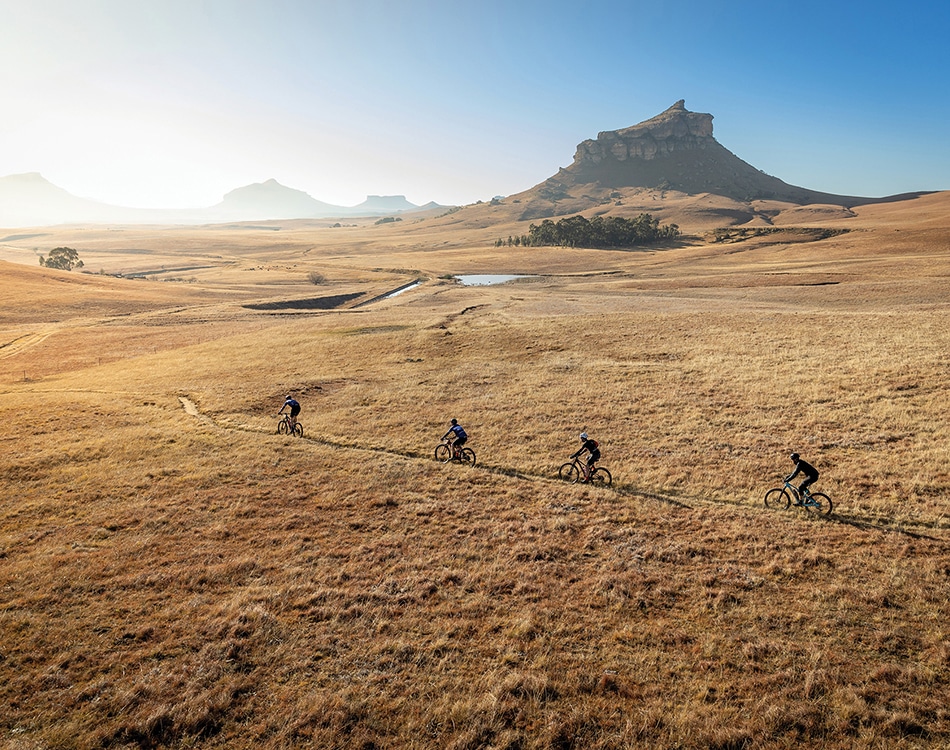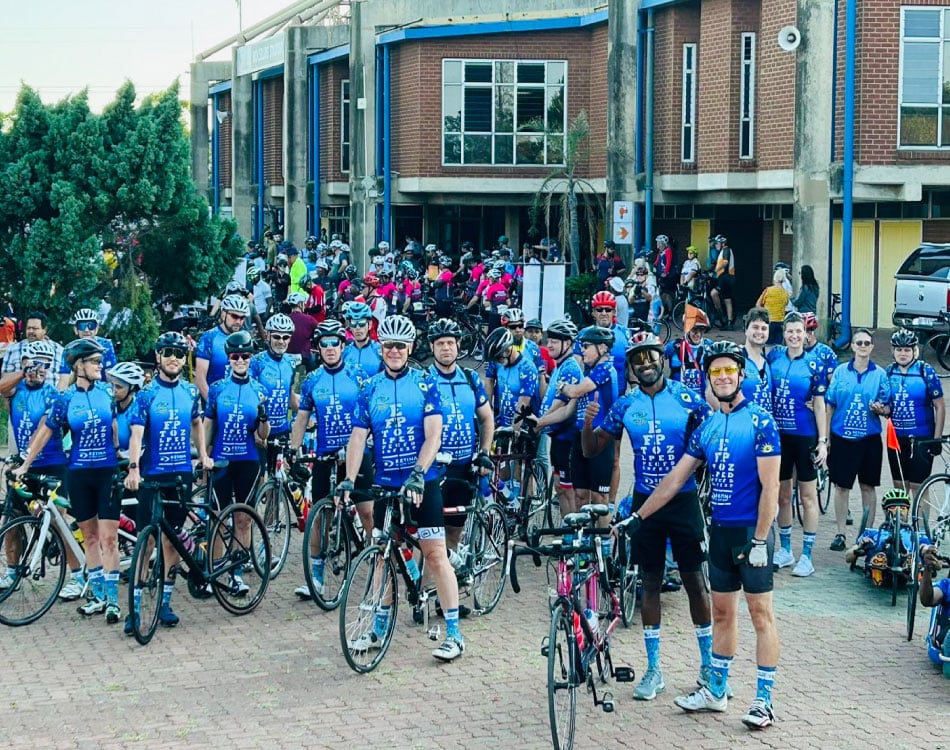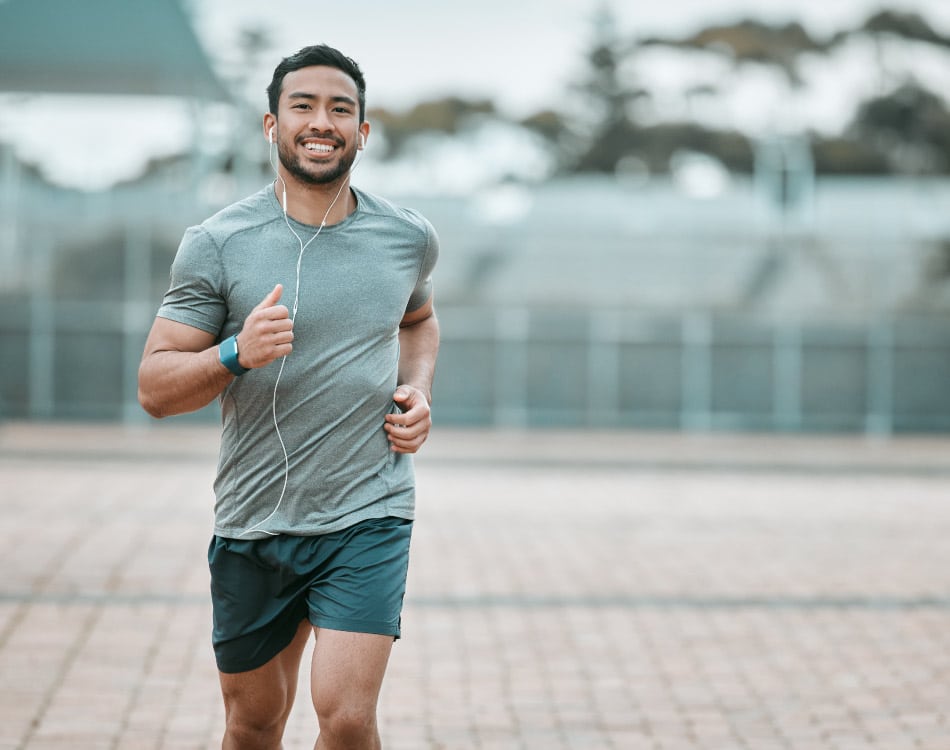Runners need strong, healthy feet to run efficiently because the foot is the foundation on which you build a powerful stride. And as most human movement specialists will tell you, “balance starts from the ground up!”
Your feet are wonderfully complex structures – each one of 26 bones, 30 joints, more than 100 muscles, tendons and ligaments, and over 7,000 nerve endings, 200,000 sensory receptors, and 250,000 sweat glands.
READ MORE | Put Your Best Running Foot Forward
Functional feet
Importantly, your feet serve as the only connection between your body and the ground via these nerves and receptors. By sending impulses to our brain, our feet help to control and coordinate our movement patterns and balance when we walk and run.
This function makes feet essential for efficient movement patterns and optimal proprioception (the ability to be aware of and sense our body movements).
Furthermore, feet provide stability and grip through the gait cycle, and act as shock absorbers on foot strike.
READ MORE | 5 Reasons To Start Running
Foot neglect
Yet, athletes often neglect their feet as we focus instead on strengthening our bigger muscle groups and logging those all-important kilometres on the road or trail.
Unfortunately, failing to make foot strength and ankle stability a priority often leads to disaster in the form of niggles or injuries.
For instance, weak feet can impact the supporting structures in our legs, particularly our Achilles tendons and calves.
And if the soft tissues in your feet – the ligaments, tendons and muscles – are not strong enough to effectively dissipated the impact and force generated on foot strike, you could suffer from stress fractures in the bones of your feet or further up the body, especially in the upper legs and hips.
READ MORE | Don’t Let Side Stitches Cramp Your Running Style
What’s causing weak feet?
As such, these structures need particular focus, especially as our modern cushioned shoes, whether worn while running or for everyday use, tend to weaken our feet and the surrounding structures.
This cushioning acts as a cast while tight and narrow shoes can reduce mobility in your feet.
Cushioned running shoe can also disrupt the vital connection between the ground and your brain, which can alter your movement patterns and change the foot’s natural position when it strikes the ground.
These factors can affect our biomechanics and movement patterns further up the kinetic chain, which may impact our knee position, hip mobility and our torso angle while running.
READ MORE | Become A Better Runner Without More Running
The foot fix
There are a few ways that you can strengthen your feet. A great place to start is walking around barefoot more often. This allows your feet and toes to do what they are naturally designed to do, which is splay open. This is the natural biomechanical function of the foot needed to dissipate force.
If you need to wear shoes, include a pair of wide shoes with a low heel-to-toe drop (also known as the stack height) – flat or 0 mm is preferable – with minimal or no cushioning or a hard sole in your shoe collection.
A firm or minimal sole will help to enhance your natural biomechanics by getting your entire foot, especially your heel and big toe, closer to the ground. Try to spend as much time as you can in this type of shoe while at work or out and about, and when performing strength training at the gym.
To step up your foot strength, roll your foot over a hard ball and add a few of toe-ga exercises each day to your routine.
By improving foot strength, foot mobility and proprioception in this way, you can actually generate more power and force to run faster and more efficiently.
READ MORE | Up Your Running Game With Help From These Nifty Apps
- Single-leg stands: Brace your core and lift up one leg. Maintain alignment between your feet, hips and shoulders. Hold the single-leg stand for progressively longer periods.
- Toe spreads: Stand with your toes as flat as possible on the ground. Create spaces between your toes to create the largest possible base. Shift your weight while keeping your toes splayed open.
- Finger weave: Weave your fingers between your toes. Move your toes forward, backward and side to side with your hand.
- Heel lifts: In a standing position, use a forward rolling motion to raise the heels until you feel the stretch in the bottom of your feet. Raise and lower your heels a few times.
- Balance beams: Place the right foot behind the left so that the toes on the right foot touch the left heel. Walk forward as if on a balance beam. Don’t look down – keep your eyes forward or closed.
- Toe scrunch: Use your toes to grab, scrunch, or roll up a towel or mat. You can also perform this exercise by trying to pick up something small from the floor, like a pencil or kitchen utensil.
- Toe wiggles: Sit on the floor with one leg straight. Bend the other and hug it. Use both hands to hold down four toes. Tap the free toe. Continue working through all the other toes Hold down a single toe with both hands. Move the other four toes up and down.
- Flutter fly: Sit with the bottom of the feet together and knees out. Open the feet like a book. Match each toe up with its corresponding toe on the opposite foot and press. Hold big toes together and move (flutter) the other eight toes. Hold eight toes together leaving the big toes free to clap together.
- Plantar flexion with band: Sit on the floor with one leg extended. Place one end of a mini band around the ball of your foot. Hold the other end as you press your foot forward. Return to the starting position under control. Repeat with the other foot.
- Big toe flexion: Sit on the floor with one leg extended. Place one end of a mini band around your big toe and hold the other end. Keep your other toes still as you push your big toe against the resistance of the band. Return to the starting position under control. Repeat with the big toe on your other foot.


